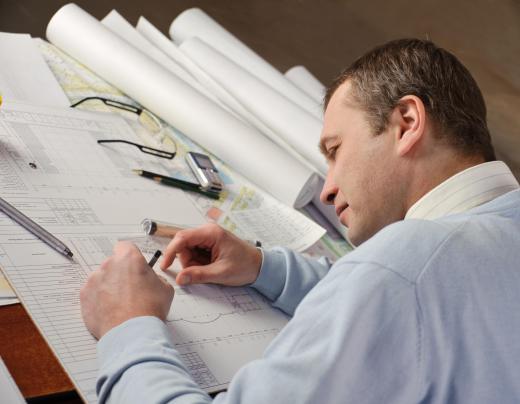A dead load is the constant weight of a structure, including the structure itself, along with fixtures intended to be permanent. When structures are designed, the architect must make dead load calculations to ensure that the structure can support itself. In addition, the weight of variable live loads that change or move over the life of the structure must also be considered. Failure to account properly for the loads a structure will endure can result in collapses and other problems.
Calculating a dead load can be difficult because the final weight of a structure may not be known until it is completed. Architects and engineers use standardized information and estimates about known building materials to calculate as closely as possible. Design software often includes features that are designed to assist with estimating dead loads, allowing people to input known specifications and returning values. It is important to be aware that adjustments made to accommodate the dead load cause it to change. For example, if an engineer determines that a bridge needs bigger girders, this will add to the load.

The dead load does not change over the life of the structure. It neither increases nor decreases and does not shift or move over time. By contrast, live loads are flexible and they will change over time. They also impact structures in different ways, in addition to weighing down the structure, they also strain it as they move around. Cars moving across a bridge are an example of a live load.

Anything that is permanently affixed to a structure is part of the dead load. In a structure like a hospital, for example, the dead load would include the building itself, along with medical imaging devices that are bolted down or otherwise fixed, fixed cabinetry, and similar objects. By contrast, the hospital beds, portable medical equipment, and other movable objects in the hospital would be part of the live load, as would personnel, patients, and visitors.
Structural design requires developing buildings that are strong and flexible enough to handle the combined dead and live loads. Buildings are usually required to exceed estimated capacities to reduce the risk of errors. Engineers must also consider sources of stress, like high wind and earthquakes that can also generate a load and lead to compromises to the structural integrity. In the case of older structures not designed with these issues in mind, retrofitting may be performed to address design shortcomings and make the structures safe for modern use.
Ever since she began contributing to the site several years ago, Mary has embraced the exciting challenge of being a About Mechanics researcher and writer. Mary has a liberal arts degree from Goddard College and spends her free time reading, cooking, and exploring the great outdoors.

